Nushrat Rahman, Detroit Free Press
Mon, October 2, 2023
A house that is billed to be Michigan's first 3D-printed home is nearly complete.
The two-bedroom, one-bath home, with its green stucco exterior, sits in Detroit's Islandview neighborhood. Citizen Robotics, the nonprofit behind the 1,000-square-foot single-family home, aims to wrap up construction by the end of the year and welcome a homeowner soon after. It has been in the works for about three years, and printing started last October. There are dozens of similar projects across the country, including a 100-home development in Texas.
The industry in the U.S. is new, but proponents say using 3D printing for building homes is the future of construction. The method, builders say, is less expensive at scale and can reduce energy costs in the long run for homeowners.
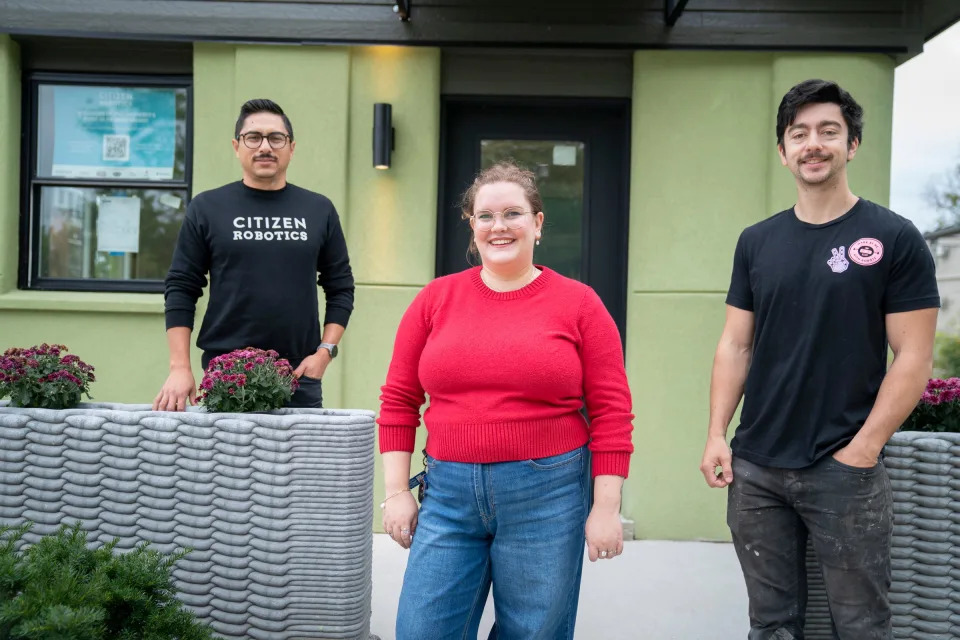
"It's about having a better process for how we build our homes," said Evelyn Woodman, co-founder and communications director of Citizen Robotics.
Here's what to know about Detroit's first 3D-printed home and the budding industry:
How 3D printing a home actually works
A refurbished robot from the auto industry, likely once used for welding, created the exterior walls, two curved walls inside the home and portions of the front porch in Citizen Robotics' facility in southwest Detroit. Don't picture a giant printer spitting out walls. Instead, a robotic arm extruded layer after layer of what's called "cementitious 3D printable mortar" to create the pieces. The mortar blocks were then brought over to Islandview to build out the home.
"The future is now," said Bryan Cook, of Detroit-based Develop Architecture, who is the architect of the home. "Everything else about what I do is already digital. It's already 3D. I design in 3D. I create the drawings in 3D. I have an interior rendering of the home in 3D. So, now we're just taking that and actually just printing it."
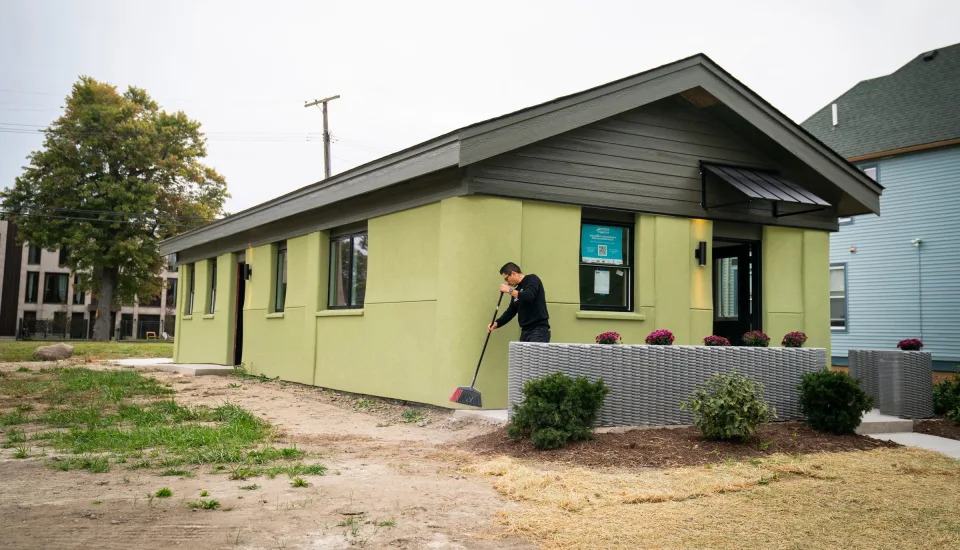
Cook said people have printed with concrete, mortar, plastics, metal and even mushrooms (specifically mycelium). The industry is flexible and ripe for innovation.
The process typically involves printing out the walls or roof of a home using a concrete-based material, said Zachary Mannheimer, founder and chairman of Alquist 3D, which has built homes in Virginia and Iowa, and partnered on projects in Florida, Texas and Winnipeg, Canada.
The end result of a 3D-printed wall is similar to the more traditional method of pouring concreate into a form, but 3D printing requires fewer people, less time and is less expensive, he said.
"We can typically do it quicker than a normal concrete or stick built-home would be," Mannheimer said. "We can do it with less labor. We can do it with less expensive material, and the material that we're using tends to be more sustainable. It's stronger than traditional concrete by at least two or three times, which means it can stand up to most major storms. It doesn't burn."

Citizen Robotics sees 3D printing as a "lever for change," Woodman said. The method replaces the exterior framing of a home, which is one of many steps, she said. The nonprofit is thinking of ways to make the entire homebuilding process — from working with construction trades and the city — more efficient.
"There are so many robots sitting in warehouses right now not doing a single thing. ... Why can't those robots be helping to build more homes for Detroiters," said Fernando Bales, build lab manager for Citizen Robotics.
It's a pilot, but builders tout some benefits
One of the main advantages of 3D printing is long-term affordability, Woodman said. The homeowner would save on energy bills each month and likely need fewer repairs. Citizen Robotics estimates heating and cooling costs for the home will be about $30 a month, compared with $150 in a traditionally built home, she said.
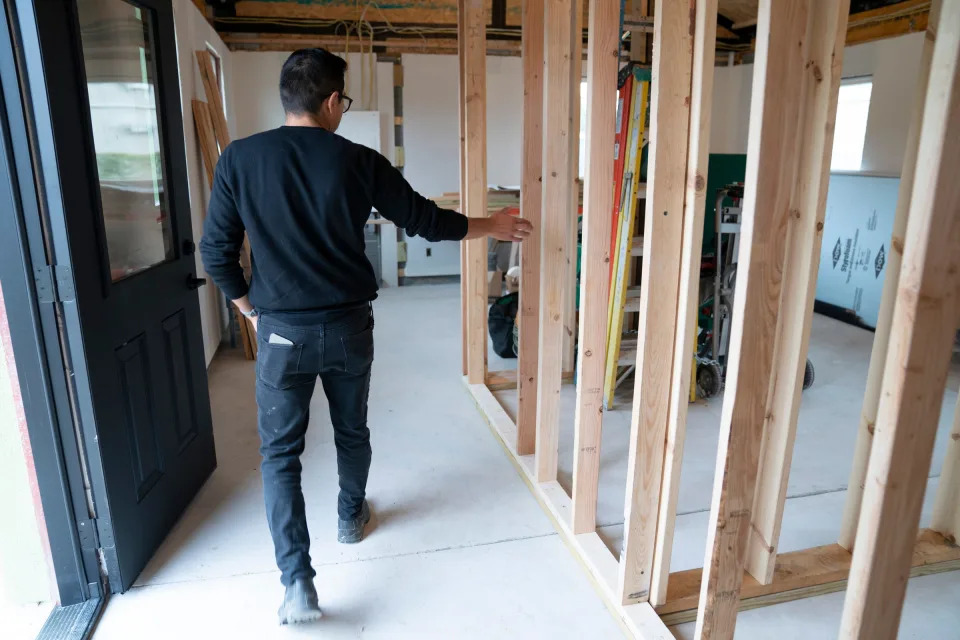
"If you're printing one home, and you compare it to a stick-built home, in many cases, that cost is going to be comparable," Mannheimer said. "When you're doing it at scale, meaning 10 or more at one time, that's when we're seeing more significant savings of anywhere from 5 to 20%, depending on the scale of the project. What we're predicting is over the next two to three years, we're going to see those costs drop dramatically."
The biggest benefit, he said, is going to be workforce development. The industry will create thousands of jobs for people globally who don't want to get a four-year degree, Mannheimer predicted.
Citizen Robotics also sees the workforce advantage. The nonprofit is interested in helping to solve the labor shortage and teach people how to build with robots.
3D-printed home price tag: $224,500
Construction of the house is expected to cost $265,000. That's on par, if not a bit more expensive, than building a conventionally framed home because it's one home and not multiple projects that take advantage of scale, according to Citizen Robotics. The organization spent $80,000 on site preparation, city water and sewer and repairing the street, Woodman said. The home is expected to be sold for $224,500. It is capped at that price.
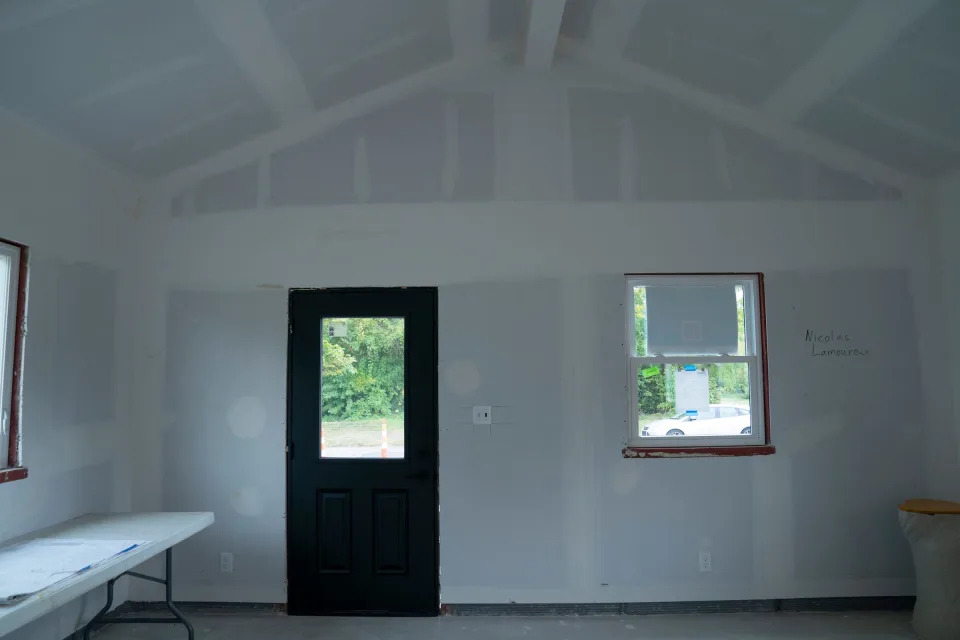
That's about four times higher than the median sale price of a home in Detroit — $55,000 — according to a Free Press analysis of 1,000 deed records. The average price, the analysis found, was $82,000.
The value of most home sales was under $100,000, according to a Detroit Future City report. Median sale prices have gone up in Detroit. Researchers found that from 2020 to 2021, the median sales price was $30,000, compared with $15,000 from 2012 to 2013.
More: Delay, decay, repeat. How Develop Detroit's Hive project turned into a rat's nest
More: Oakland County Sheriff Michael Bouchard warns against burglary gangs from 'south of the border'
The development process is what makes building difficult, Cook said. It's not affordable right now to build one-off 3D printed homes, he said.
"We can make and design a bunch of homes," he said. "That's not the issue. It's finding the land, making it affordable for people, making it available to people and being able to continue to do the work."
The Michigan State Housing Development Authority (MSHDA), which is funding the project, requires the home to be sold to a buyer at 80% of the area median income (AMI). That translates to a family of three making $68,240. AMI is regional measurement set by the federal government.
MSHDA provided a $143,000 grant and $130,000 construction loan for the project. The authority will evaluate the results of the pilot and "continue to explore innovative opportunities to address the statewide housing shortage," MSHDA Communications Director Katie Bach said in an email. MSHDA does not foresee funding more 3D-printed home projects at this time.

The Detroit project is believed to be the first 3D-printed single-family home in Detroit and Michigan, according to MSHDA.
What's going on across the country?
There are nearly 100 3D-printed homes across the country, Mannheimer estimated. He expects the numbers to increase every year. His company has completed four homes with families either living in them or slated to move in, and is in the process of completing several houses in Iowa.
"The housing industry has not changed the way we built a house in over 100 years. It's due for advancement. So 3D creates a home that's more sustainable, that uses less carbon and is more environmentally friendly," Mannheimer said. Traditional builds face three major problems, he said: the rising cost of materials, labor shortages and increasing natural disasters.
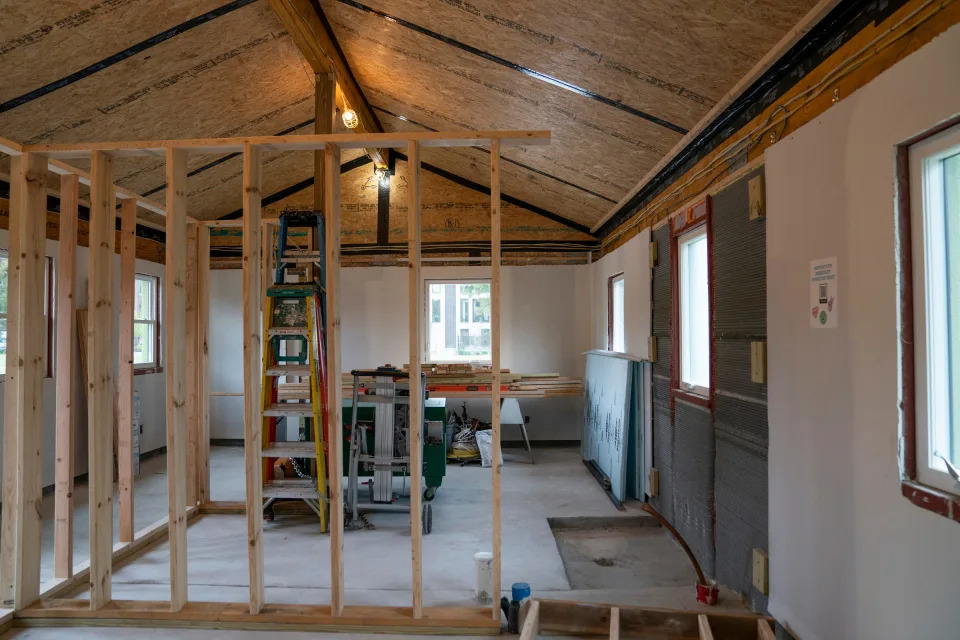
In 2021, Habitat for Humanity, in partnership with Alquist 3D, completed the nonprofit's first 3D printed home in Virginia and a family has moved in.
"We're only five years into the industry and we're already matching costs," Mannheimer said. "Two years from now, these homes are going to be significantly less expensive."
When will the home be available?
Citizen Robotics aims to finish the home by the end of the year, Bales said. The nonprofit expected to build the home in six to nine months, but faced delays as it sought to get permits and fulfill city requirements. Citizen Robotics printed the wall in five days but other parts of the process took longer.

"From applying for permits, acquiring those permits, excavating the site, not to mention removing all the refuse that was on this site, pouring the foundation, waiting for concrete — there was a concrete shortage at the time — so we were waiting, waiting, waiting for concrete to show up. All of that slowed the process back down," Bales said.
Still, Citizen Robotics wants to build more 3D-printed homes in Detroit and other cities across the state.
"I don't think it's a fad that more and more construction people are adopting tech, especially younger people," Bales said.
Contact Nushrat: nrahman@freepress.com
Follow her on Twitter: @NushratR


No comments:
Post a Comment